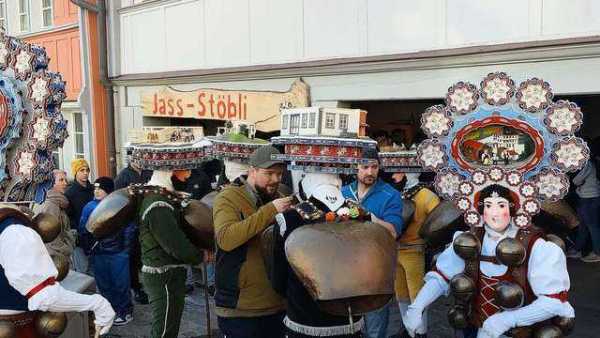
Often touted as one of the most popular destinations to visit by travellers and tourists alike, Switzerland has charmed globetrotters with its incomparable beauty and magnetic allure. While the country is known for its majestic snow-capped mountains, pristine lakes, quaint villages, and lush green meadows, Switzerland is also a country rooted in customs and traditions. Most of the native festivals and folk traditions are intrinsically associated with particular regions, seasons and most importantly, Alpine farm life. One region where indigenous culture is unmissable is the hilly landscape of the Appenzellerland. Apart from folk dances, music, cattle shows and parades, there is a relatively lesser-known tradition called Silvesterchlausen, which is celebrated here twice annually. The first time on New Year’s Eve (December 31), which is also called St. Sylvester’s Day, and the second time on January 13. I recently witnessed this rather fascinating tradition when I visited the charming village of Urnäsch in the canton of Appenzell Ausserrhoden. Urnäsch is about 90km from the city of Zurich.
Silvesterchlausen is a unique tradition where the men and boys of the town wear colourful masks, traditional robes, characteristic head dresses, and cow bells, and move around in groups yodelling and wishing people a happy new year. This tradition is celebrated on New Year’s Eve, according to both the Gregorian and the Julian calendars, which is on December 31 and January 13 respectively.
As a matter of fact, a large part of the Protestant population of Ausserrhoden followed the Julian calendar till as recently as 1798. While the origins and significance of the custom are not clearly documented, it is a tradition that dates back centuries; the earliest written document mentioning Silvesterchlausen dates back to 1663.
Some opine that it is linked to the St. Nicholas tradition (a custom where treats like nuts, gingerbread and oranges were given to children on December 6) while others link it to various socio-cultural aspects including fertility, warding off evil, and superstition.
The entire town wears a festive ambience on the day of Silvesterchlausen with people visiting to witness the spectacle from far and wide. As you take a stroll around the town centre, it is not uncommon to see different groups wearing coordinated outfits. This is because there are three types of Silvesterchläus: the “Schöne” (the beautiful), the “Wüeschte” (the ugly), and the “Schö-Wüeschte” (the beautifully ugly). The costumes of each of the three groups are a revelation.
While the beautiful Silvesterchläus wear pretty, bright, traditional outfits, their headgear in the form of extravagant hats and bonnets are the highlight. They are ornately crafted, embellished with pearls and other ornaments, and depict scenes from daily life.
The beautifully ugly Silvesterchläus wear cloaks that are covered with natural elements like wood carvings, pine cones, lichens and shells.
They bear a distinctly terrifying look; their masks are made with animal teeth and cow horns. It is key to note that each of these ugly masks are handmade and one of a kind.
The groups choose their own routes often starting out very early in the morning and go from house to house. Each group is locally called a “Schüppel” and consists of a couple of “Rolli” and several “Schelli”. The latter carry one or two large cow bells round their necks while the “Rolli, also called the “Rolliwiiber”, wear anywhere between eight and 13 bells that are fastened on leather straps like braces.
Considering that these bells are very, very heavy, Silvesterchlausen is predominantly a male custom. The role of the women is limited to getting the hats and bonnets ready. As they reach the houses, each group stands in a circle and sing a few “Zäuerli”, which are essentially yodels. Periodically they sway their bells in a vigorous yet rhythmic manner. In the end, they are offered apple juice and some money. After the houses, the groups visit shops before calling it a day.
While in the Urnäsch, the Appenzeller Brauchtumsmuseum makes for an insightful visit as it houses a wealth of information related not only to Silvesterchlausen but also other unique customs like the Bloch, the Alpfahrt, and other cattle-related festivals. Visitors can envisage a day in the life of the Alpine farmers with their engaging displays, which includes scenes from their social and cultural life.
From traditional costumes, belts, cow bells, hats, kitchen tools, vessels, farming equipment and carpentry accessories to jewellery, musical instruments, and furniture of the years gone by, the museum has it all. There are several old photographs and paintings that depict farm life and its associated traditions. The ancient crafts of the region like painting and wood carving have also been depicted.
The museum is highly interactive with audio visual guides, and information boards, and visitors can even try their hand at playing traditional musical instruments, or games here.